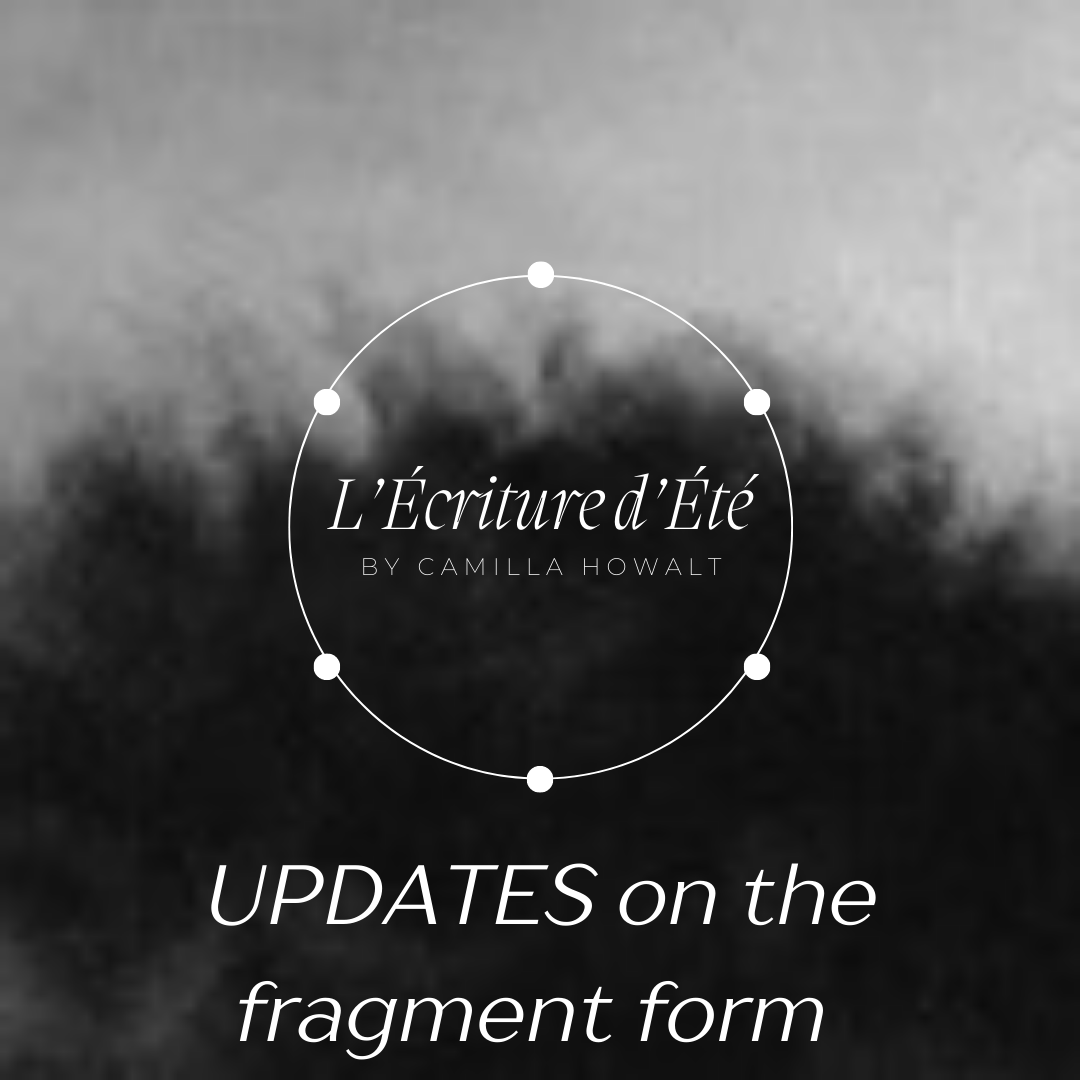IN PIECES, IN GOLD
Fragments are like puzzle pieces - individual elements that belong to a larger whole.A fragment is “a small part broken off or separated from something larger” - like pottery shards scattered across a table, each holding a hint of the full object they once were.When I created and shared my short story L’Écriture d’Été in fragments, I didn’t fully know what it would become.
Looking back, I now see why this form called to me - and how it shaped not just the story, but my way of working. What follows is a reflection on fragments, space, repair, and the unexpected lessons that came from them.
• The literary fragment comes out of a poetic and philosophical tradition that I find immensely interesting and challenging. It feels like a truer reflection of how life plays out - partial, elliptical, flickering in and out. Sharing my story in daily fragments allowed for a kind of meta-play: a short story, released in shorter elements. A fragment within a fragment. A system of fractals.
• The artistic fragment opens spaces between compositional elements. These spaces allow quiet - a pause - and invite the reader’s mind to associate, imagine, and bring forth other possible narratives. In that space, meaning can shimmer.
Practically, sharing large chunks of writing on social media (or even online platforms) often overwhelms. The form I chose wasn’t just artistic, but responsive to how we read now: in glimpses, in transit, with fingers scrolling.
Personally, this project was a way of learning to share my writing alongside my visual art - and feel excited doing so. The fragments gave me a daily incentive, a dose of courage, and freedom.
And underneath all of this runs the quiet thread of Kintsukuroi - the ancient Japanese technique of repairing broken pottery with gold. This metaphor has lived in my work for a long time. The way the old - the broken - is given a new and often more beautiful place in our lives. The visible repair becomes part of the story.
This post is not a preview. It’s a looking back. A tribute to the fragment.
Thank you for reading.
© Camilla Howalt
